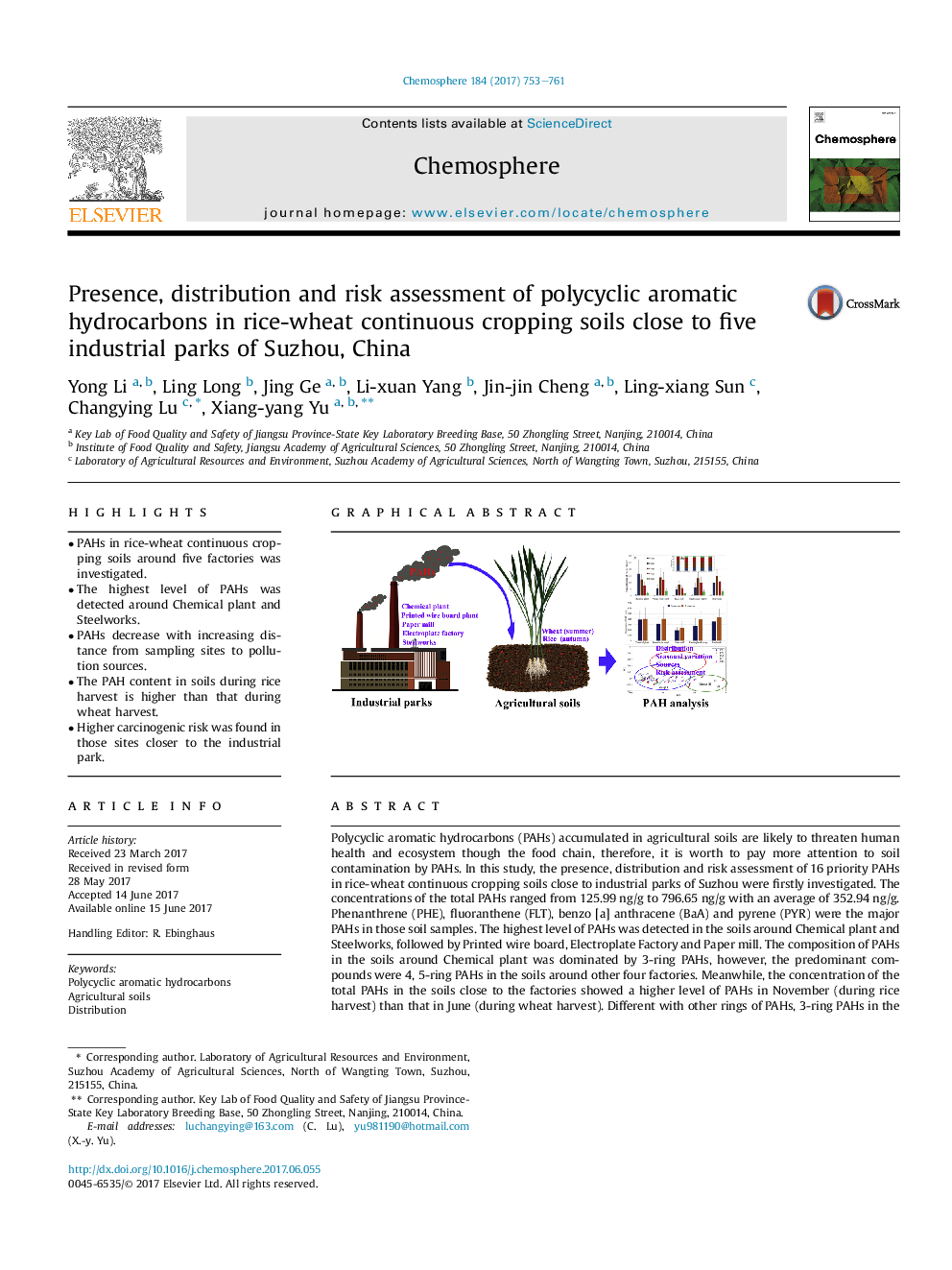| کد مقاله | کد نشریه | سال انتشار | مقاله انگلیسی | نسخه تمام متن |
|---|---|---|---|---|
| 5746211 | 1618787 | 2017 | 9 صفحه PDF | دانلود رایگان |
- PAHs in rice-wheat continuous cropping soils around five factories was investigated.
- The highest level of PAHs was detected around Chemical plant and Steelworks.
- PAHs decrease with increasing distance from sampling sites to pollution sources.
- The PAH content in soils during rice harvest is higher than that during wheat harvest.
- Higher carcinogenic risk was found in those sites closer to the industrial park.
Polycyclic aromatic hydrocarbons (PAHs) accumulated in agricultural soils are likely to threaten human health and ecosystem though the food chain, therefore, it is worth to pay more attention to soil contamination by PAHs. In this study, the presence, distribution and risk assessment of 16 priority PAHs in rice-wheat continuous cropping soils close to industrial parks of Suzhou were firstly investigated. The concentrations of the total PAHs ranged from 125.99Â ng/g to 796.65Â ng/g with an average of 352.94Â ng/g. Phenanthrene (PHE), fluoranthene (FLT), benzo [a] anthracene (BaA) and pyrene (PYR) were the major PAHs in those soil samples. The highest level of PAHs was detected in the soils around Chemical plant and Steelworks, followed by Printed wire board, Electroplate Factory and Paper mill. The composition of PAHs in the soils around Chemical plant was dominated by 3-ring PAHs, however, the predominant compounds were 4, 5-ring PAHs in the soils around other four factories. Meanwhile, the concentration of the total PAHs in the soils close to the factories showed a higher level of PAHs in November (during rice harvest) than that in June (during wheat harvest). Different with other rings of PAHs, 3-ring PAHs in the soils around Chemical plant and Steelworks had a higher concentration in June. The results of principal component analysis and isomeric ratio analysis suggested that PAHs in the studied areas mainly originated from biomass, coal and petroleum combustion. The risk assessment indicated that higher carcinogenic risk was found in those sites closer to the industrial park.
391
Journal: Chemosphere - Volume 184, October 2017, Pages 753-761
